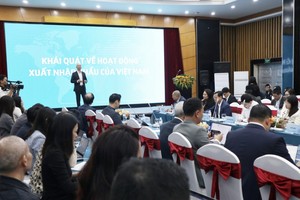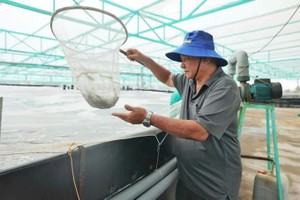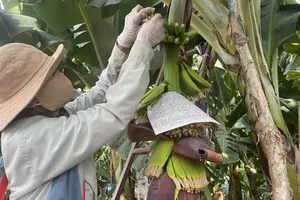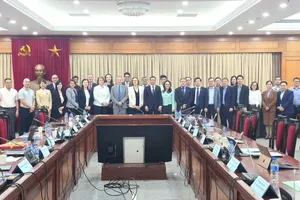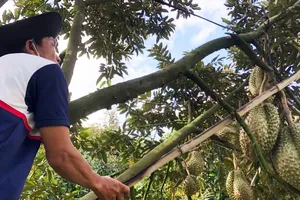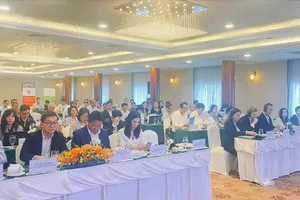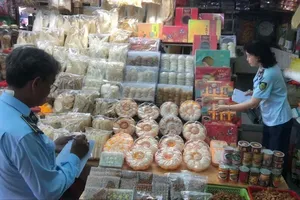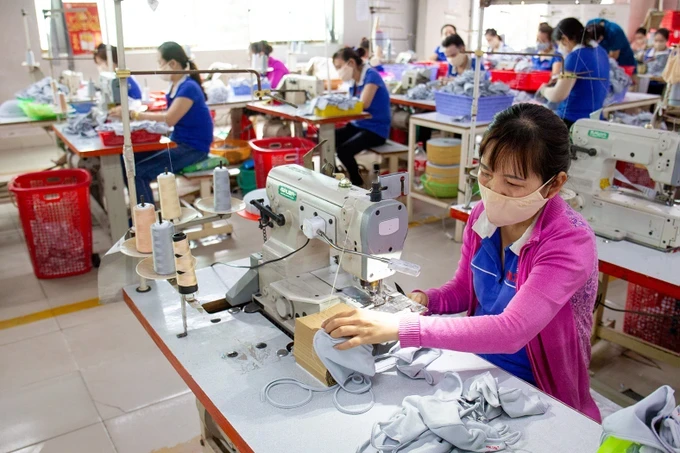
In the early months of this year, Vietnam's textile and garment export turnover reached US$3.19 billion, marking a 1.8 percent increase compared to the same period last year. The Vietnamese textile and garment industry is targeting an export value of approximately US$47-$48 billion by 2025, aiming to sustain its position among the top global textile and garment exporters. This achievement is attributed to leveraging opportunities from free trade agreements and the recovery trend in the international market.
According to the Vietnam Textile and Apparel Association (VITAS), in 2024, the textile and garment industry will bring in about $44 billion, an increase of nearly 11 percent compared to 2023. This result helps Vietnam rise to the second position in the world in textile and garment exports, after China. The US, EU, Japan and South Korea are still Vietnam's main export markets.
In the first month of 2025 alone, the US continued to be Vietnam's largest textile and garment export market, with a turnover of US$1.4 billion up 6 percent over the same period last year. Data from the Ministry of Industry and Trade shows that Vietnam's textile and garment market share in the US has increased from 10 percent in 2018 to nearly 20 percent in 2024, thanks to the shift of orders from China.
Chairman Nguyen Xuan Hong of the Ho Chi Minh City Textile and Garment Embroidery Association said that in the context of the US imposing tariffs on many countries, including China, Vietnam can benefit when businesses shift their supply chains.
Currently, major corporations like Nike, Adidas, and Puma are transferring orders from China to Vietnam, significantly boosting the textile and garment industry. Additionally, FDI enterprises from Taiwan (China), South Korea, and Japan are investing in Vietnam to capitalize on its labor force and free trade agreements (FTAs).
Noteworthy projects include Texhong Group (China) expanding its yarn factory in the Northern Province of Quang Ninh; Shenzhou International Company (China) investing over $150 million in the Central Province of Nghe An; and Youngone Group (Korea) channeling capital into the Industrial Park in the Northern Province of Bac Giang.
Many Vietnamese textile and garment enterprises have also secured significant export orders for 2025, especially those with long-standing experience in the industry. General Director Pham Van Viet of Viet Thang Jean Company said that the company has received orders until June of this year.
Leaders of Nha Be Garment Corporation said that many businesses in the system have exported products to many countries and have obtained new customers with long-term orders. However, the business is still carefully considering in choosing partners and delivery times to minimize risks due to price fluctuations. Similarly, many member units of the Vietnam Textile and Garment Group (Vinatex) have orders until the end of the second quarter of 2025, even until the third quarter, and are continuing negotiations for the whole year.
Despite significant progress, Vietnam's textile and garment industry still faces competitive pressure from countries like Bangladesh, India, and Pakistan. These countries benefit from lower labor costs and special tariff incentives under the Generalized System of Preferences (GSP) granted by the United States. Meanwhile, Vietnam has yet to receive GSP from the United States, resulting in Vietnamese textile and garment products being subject to an average tariff of 10-30 percent when entering the US market, higher than those of its competitors.
Furthermore, Vietnam imports up to 80 percent of its textile and garment materials from China, including fabric, yarn, and dyeing chemicals. When the U.S. imposes tariffs on China, the cost of raw materials may rise, impacting the production costs of Vietnamese businesses.
Although the U.S. has not yet imposed high tariffs on Vietnamese textiles and garments, this risk still exists, said Mr. Keith Hwang, a lawyer specializing in US Customs Compliance.
He added that in 2020, the U.S. investigated Vietnam regarding the origin of goods. If Vietnam fails to effectively regulate the origin of raw materials and products, it could face anti-dumping or trade defense tariffs. This would weaken its competitive edge and hinder the ability to attract orders.
Vietnam Textile and Apparel Association Chairman Vu Duc Giang suggested a multi-pronged approach to the problem: promoting the growth of supporting industries, encouraging investment in domestic fiber and fabric production, and focusing on the development of domestic supply chains for fiber, fabric, and dyes.
The Government must implement policies that enable small and medium-sized businesses to engage in the global supply chain.
To boost business productivity and sustainability, companies should leverage automation, artificial intelligence, and big data analytics in their production processes. This will enable the development of eco-friendly manufacturing models that reduce carbon emissions. Concurrently, businesses should build a robust supporting industry ecosystem to lessen their reliance on China.
The Ministry of Industry and Trade is urgently implementing measures to diversify export markets. Accordingly, expanding exports to the EU, Japan, and South Korea is being promoted to reduce dependence on the US market, while taking advantage of free trade agreements (FTAs).
As per the Ministry of Industry and Trade, if Vietnam takes advantage of opportunities and has the right strategy, it can completely develop well and become the world's leading textile and garment center.
